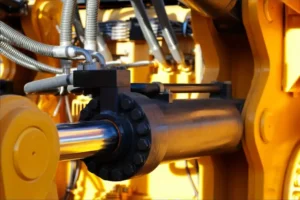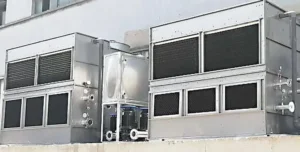Induction furnaces play a crucial role in modern metallurgical industries, and refractory materials, as their furnace lining, directly impacts smelting efficiency, product quality, and production costs.
Vì thế, a deep understanding of the fundamentals of refractory materials and mastering the correct selection methods are essential for the stable operation of induction furnaces.
Basic Concepts of Refractory Materials
Refractory materials are inorganic non-metallic materials that can resist physical and chemical changes and mechanical actions at high temperatures. Their main components include oxides, carbides, nitrides, vân vân., and they possess properties such as high-temperature resistance, chống ăn mòn, and thermal shock resistance.
Common Types of Refractory Materials for Induction Furnaces
- Alumina Refractory Materials
- Mainly composed of alumina, with high refractoriness and corrosion resistance, suitable for melting various metals.
- Advantages: Strong resistance to acidic slag.
- Nhược điểm: Poor resistance to alkaline slag.
- Silica Refractory Materials
- Mainly composed of silica, with good high-temperature strength and thermal shock resistance.
- Suitable for acidic furnace charges such as cast iron.
- Magnesia Refractory Materials
- Mainly composed of magnesia, with excellent resistance to alkaline slag corrosion.
- Suitable for alkaline furnace charges.
- Composite Refractory Materials
- Composed of two or more types of refractory materials, combining the advantages of different materials.
Key Points for Selecting Refractory Materials for Induction Furnaces
- Type of Melted Metal
- Different metals have different requirements for the corrosion resistance of furnace lining materials. Ví dụ, when melting alkaline metals, magnesia refractory materials with strong resistance to alkaline slag corrosion should be selected.
- Furnace Temperature
- The higher the furnace temperature, the higher the refractoriness requirement for refractory materials.
- Slag Properties
- The acidity, alkalinity, viscosity, and corrosiveness of slag will affect the lifespan of furnace lining materials.
- Furnace Lining Structure
- The thickness, shape, and construction method of the furnace lining will affect the performance of the materials.
- Economic Efficiency
- While meeting usage requirements, the price, lifespan, and maintenance costs of the materials should be comprehensively considered.
Performance Indicators of Refractory Materials
- Refractoriness
- Refers to the limit of the temperature that a material can withstand without softening and melting.
- Refractoriness Under Load (RUL)
- Refers to the temperature at which a material begins to soften under load.
- Thermal Shock Resistance
- Refers to the material’s ability to resist damage from rapid temperature changes.
- Corrosion Resistance
- Refers to the material’s ability to resist corrosion from molten slag, molten metal, vân vân.
Phần kết luận
Correctly selecting refractory materials for induction furnaces can not only extend the lifespan of the furnace lining and reduce production costs but also improve smelting efficiency and product quality. Vì thế, metallurgical enterprises should fully understand the performance characteristics of refractory materials and select the most suitable furnace lining materials according to actual production needs.







